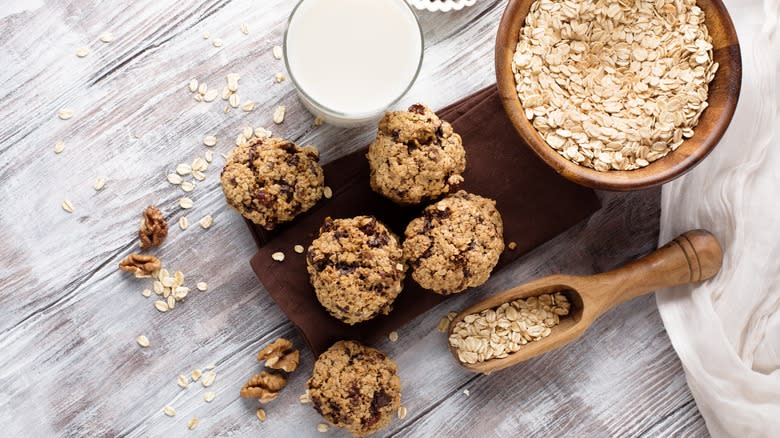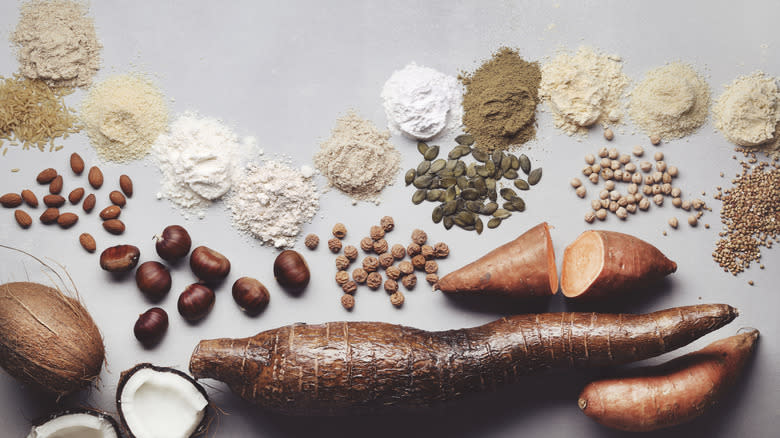The Crucial Step To Baking Delicious, Gluten-Free Cookies

You're following a new recipe for gluten-free cookies. After carefully measuring and mixing the ingredients and shaping compact cookie dough balls, you bake them with high hopes. Yet, when you take them out of the oven, you're disappointed: The gluten-free cookies are dry, gritty, and crumbly, not at all the chewy delights you envisioned.
Baking gluten-free cookies can be challenging, especially when the texture is not right. The key to avoiding this disappointment lies in a crucial step that is often missed: allowing the dough to rest and hydrate. Gluten-free flours, such as oat, rice, or almond flour, are more hydrophilic than traditional wheat flour, meaning they require more moisture. This is essential to replicate the chewy, structured texture provided by gluten in standard flours.
The process begins after mixing your cookie dough. Instead of proceeding directly to baking, let the gluten-free cookie dough rest for about 30 minutes at room temperature. This resting period is crucial for hydration, not leavening. During this time, gluten-free flours absorb moisture from the wet ingredients, altering the dough's texture and consistency. This step ensures that your cookies are not overly dry, dense, or gummy once baked. By giving the dough time to hydrate, you set the stage for a batch of cookies that are just as delightful as their gluten-containing counterparts.
Read more: 25 Chocolate Brands, Ranked Worst To Best
The Food Science Of Hydration

Let's dive deeper and explore the food science behind resting gluten-free cookie dough and why this is a crucial step if you want delicious cookies that rival gluten-filled ones. Since gluten-free flour is hydrophilic, it gradually absorbs moisture from all of the wet ingredients in the cookie dough, causing particles to swell and bind. In turn, this reduces the cookie's sandy and gritty textures post-baking. Plus, a well-hydrated gluten-free cookie dough is easier to handle and shape.
To rest the dough correctly, cover it and leave it at room temperature after mixing. You'll notice that the dough becomes less sticky and more pliable. At this point, the dough is ready for baking. Like cookie dough made with wheat flour, you can refrigerate or freeze the dough. This storage adaptability allows you to make cookie dough ahead of time and enables you to bake fresh cookies whenever desired. Once the dough is adequately hydrated, it's time to bake. Scoop it out with a cookie scooper or tablespoon, shape it into dough balls, and bake. The result? Fresh, delicious, gluten-free cookies that satisfy your cravings without compromise.
Read the original article on Tasting Table.

 Yahoo Sports
Yahoo Sports 